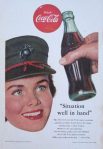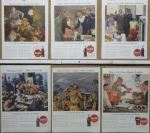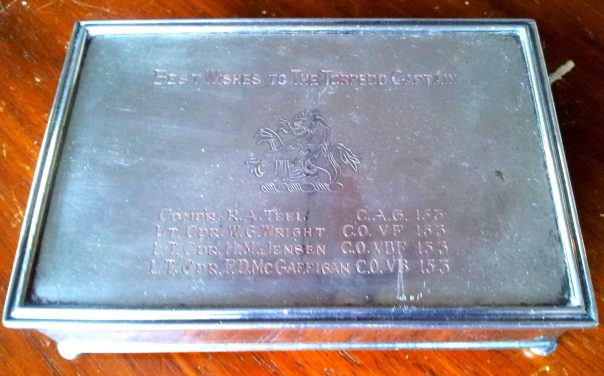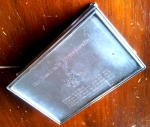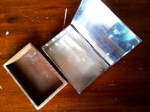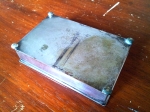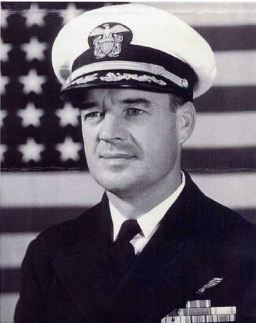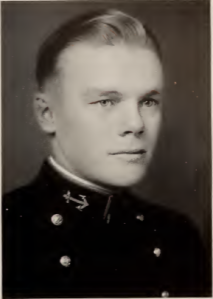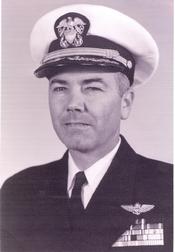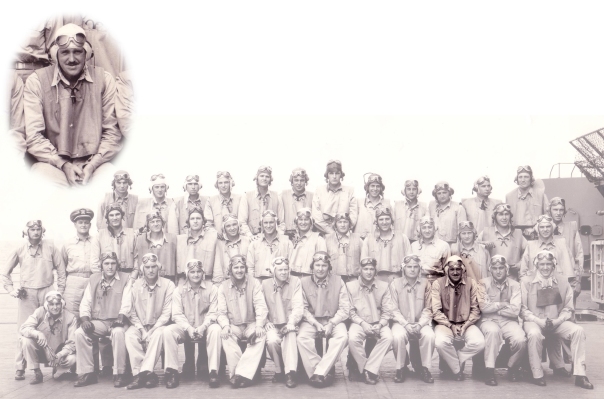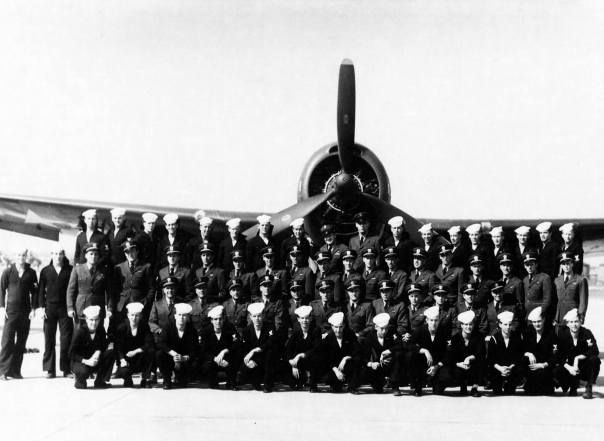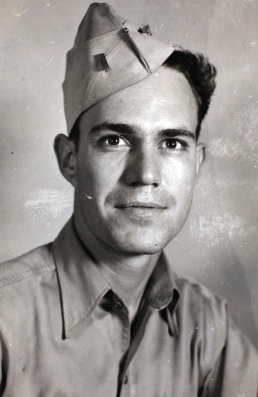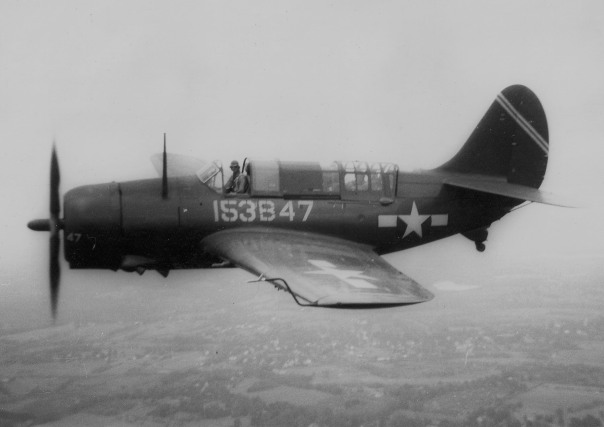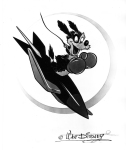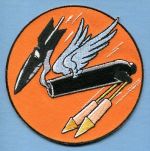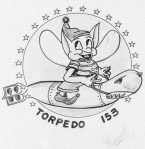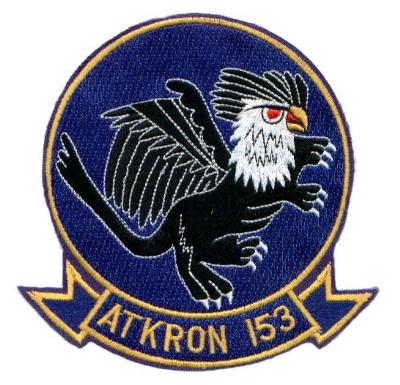Blog Archives
Historic Group Spotlight: Naval Aviator who Spotted and Maintained Visual Contact of the Bismarck
Most of the militaria and artifacts that I write about are pieces that are in my collection or are historical events that have some sort of personal context or connection. There are times, however that I find myself absolutely fascinated with artifacts in others’ collections that have me absolutely captivated. The subject of my efforts in this piece has me captivated both by the items and their original owner’s participation in history.

U.S. naval aviator, Carl Rinehart in the co-pilot seat during World War II (image source: Kurt Stauffer).
Militaria collecting, for me and many other collectors, is about the history. More specifically, it is about the individual and personal connections to historical events. For collectors, seeking out and acquiring artifacts from veterans who participated in pivotal or notable events helps to breathe life into what can otherwise be, for much of the population, a mundane event from the past.
The average American fan of World War II history is familiar with events tied to the more obvious specific dates: December 7, 1941, June 6, 1944 or perhaps even, August 6, 1945. For those of you who might need some hints as your morning coffee or tea has yet to take effect: Pearl Harbor, D-Day and Hiroshima. Most people know about specific campaigns and battles such as Iwo Jima, Midway, Operation Overlord and the Battle of the Bulge.
Considering those details, how many Americans are familiar enough with history to understand that World War II was being fought in Europe for nearly two years prior to the United States Congress’ war declaration on December 8th? For that matter, war was in full swing in Asia for almost five years by December of 1941. With this in mind, how many of the American public understand that though the U.S. was abstaining from the war and clinging to the isolationist stance, U.S. servicemen were, in fact, active and serving in both the Pacific and European theaters?
Perhaps one of the most significant naval pursuits (culminating in two significant battles) during those early years of WWII surrounds the engagement between the navy of Great Britain and the German Kriegsmarine that spanned six days in May of 1941. A prevalent and familiar battle cry that still resonates from that time was the call to “Sink the Bismarck” as the British sought to both avenge the loss of the HMS Hood (at the Battle of the Denmark Strait on May 24, 1941) and prevent the German ship from succeeding in her mission to disrupt the transatlantic shipping lifeline from North America (Operation Rheinübung). The Royal Navy ultimately prevailed in her mission, ending the German battleship’s short-lived career with the effective employment of carrier-based aircraft to disable the ship followed by naval gunfire to send her to the bottom on May 27.

Bismarck after her breakout steams near Iceland prior to the Battle of Denmark Strait, 1941.
These naval battles between our ally and the Germans are the subject study by historians and military strategists alike and are frequently popularized with articles, books and television programs, keeping the history on the forefront of cultural heritage on both sides of the Atlantic. But one fact that is seldom discussed is that American naval aviators played a small role in the Royal Navy’s open-ocean victory.
In the early years of Britain’s war with Germany, the U.S. was providing assistance in their fight by sending supplies (food, fuel and military equipment) across the ocean in large convoys. Recognizing the significance of that vital lifeline, the Germans re-employed and improved upon a WWI tactic of utilizing submarines (U-boats) in “wolf-packs” to destroy, or at least, disrupt the movement of the convoys, sending thousands of tons of merchant ships to the ocean bottom. In response, the U.S. began supplying Britain with long-range patrol and bomber aircraft providing an effective counter-tactic, protecting the convoys from the subsurface threats.
Just weeks prior to the Bismarck engagements, the Royal Air Force began taking delivery of American-supplied PBY Catalina flying boats. To expedite training of the RAF flight crews on their new aircraft, the U.S. Navy also sent their own support crews and aviators. Despite the U.S. neutrality at this point in the war, some U.S. Navy aircrews would support the RAF by flying patrol missions in the PBYs.
Days following the Denmark Strait engagement (and the loss of the battlecruiser Hood), a Consolidated-built PBY-5 Catalina departed Oban, Scotland on a patrol mission in search of the Bismarck. PBY “O” with Carl W. Rinehart in command, launched May 26 at 12:15pm on what would become a record-setting (for airborne length of time) and historic flight. Twelve hours later, Rinehart’s crew spotted the Bismarck steaming in the direction of occupied France (the ship had been spotted and position reported hours earlier by another U.S. Navy Catalina pilot, Ensign Leonard B. Smith). Dropping down for a closer look, the Catalina descended from the clouds into a firestorm of anti-aircraft gunnery from the enemy ship, and Rinehart and his co-pilot struggled to maneuver the flying boat to safety.
- The pinnacle of the Rinehart group – his naval aviator flight log books. It is fascinating to see such monumental historic moments on the pages of these logs (image source: Kurt Stauffer).
- Rinehart’s Flight Log – Entries for May, 1941. Note the entry with the red pencil encircling of two specific entries – the 26.2 hours of flight and the search for the Bismarck (image source: Kurt Stauffer).
- The entry for the May 26-27, 1941 Bismarck search mission that resulted in a record-setting flight for time in the air. It also resulted in locating the enemy ship and maintaining contact until she was sunk (image source: Kurt Stauffer).
Remaining in the vicinity of the Bismarck, Rinehart and his crew maintained visual contact with the ship observing the ensuing aerial torpedo assault by the Swordfish aircraft from the HMS Ark Royal on the evening of the 26th. Now with her rudders jammed, Bismarck was unable to continue her course to the safety of German air cover. Over the course of the night, the Royal Navy was able to draw in the attacking surface force and bring about the end of the Kriegsmarine’s pride. Catalina “O” and her crew were present, witnessing the entire last battle of the Bismarck. Low on fuel, Rinehart turned his plane on a heading to return to base. Touching down at 13:40 on May 27, his Catalina had been airborne for more than 26 hours of continual flight.
Rinehart would continue to serve throughout WWII and through the Korean War. He retired from the navy with the rank of captain having earned the Distinguished Flying Cross (not for the Bismarck patrol). Captain Rinehart passed away in 1996 at the age of 83 in Pensacola, Florida.
- Rinehart’s Photo Album Cover (image source: Kurt Stauffer).
- One of the images in Rinehart’s photo album showing a PBY Catalina, 31-P-21, in flight over Panama (image source: Kurt Stauffer).
- Rinehart Image – Lining up for a bombing run on an enemy train (image source: Kurt Stauffer).
- Another scan of a Rinehart Image of what appears to be an attack on a train(image source: Kurt Stauffer).
- One of Carl Rinehart’s photos of an aerial bomb exploding over a target. This image was probably taken, most likely, from Rinehart’s PBY (image source: Kurt Stauffer).
Years later, artifacts from his lengthy naval career surfaced at auction and one collector was fortunate to acquire several items, piecing together this well-rounded group that documents Captain Rinehart’s tenure. Among his decorations and ribbons are Rinehart’s service and campaign medals along with his DFC medal. There are also the usual rank devices and a nice set of gold naval aviator’s wings and other insignia devices all belonging to Rinehart.

This excellent collection of medals, devices and other personal pieces from Captain Rinehart’s naval service are a nice example of a WWII naval aviator’s service. As Rinehart served through the Korean War, he most certainly would have had additional medals and ribbons along with devices for his final rank. These pieces must exist in another collector’s possession (image source: Kurt Stauffer).
For me, the items that truly makes this group stand out are ephemera. This collector was able to obtain Rinehart’s spectacular photo album containing snapshots from his wartime service. While each of these images are one-of-a-kind and represent a seldom seen vantage point into the life of WWII decorated flying boat aviator, they still pale in comparison to the central, most historically significant aspect of Rinehart group, his flight log books.
- The first entry on this page sums up the historic day, the capitulation aboard the USS Missouri by the Japanese (image source: Kurt Stauffer).
- Rinehart noted that the Japanese had agreed to the unconditional surrender terms of the Allied forces (image source: Kurt Stauffer).
- A page from Rinehart’s Photo Album (image source: Kurt Stauffer).
- Rinehart Image – Performing Maintenance on the PBY’s vertical stabilizer (image source: Kurt Stauffer).
Thumbing through the pages, there are significant events noted by Rinehart among his various flights and missions including, “Peace Signed Aboard BB USS Missouri in Tokyo Bay V-J Day.” Capping off the log entries is one particular flight with mention of the Bismarck search circled in red colored pencil and the take-off/landing times.

Rinehart’s PBY Crew somewhere in the South Pacific during World War II (image source: Kurt Stauffer).
While a grouping from Rinehart’s more notable colleague, Leonard Smith, might bring more attention and monetary value, this group is no less historically significant.
(All photos depicting the Carl Rinehart collection are courtesy of Kurt Stauffer unless otherwise noted)
Forecasting Patchy Skies: Sew-on Naval Aviation Heraldry

Counterclockwise from top left: VF-51 Screaming Eagles as the unit was being deactivated; VF-41 sporting the Tomcat character (for the F-14 Tomcat aircraft); HC-11, Detachment 5′s WestPac cruise patch; HC-11 squadron patch.
Since I began this blog, I’ve covered various aspects of military-patch collecting. From shoulder sleeve insignia (SSI) to rank and rating badges, this area of collecting has something for every level of collecting, from the beginner with a scant budget to the experienced one who collects each and every obscure variation of his or her favorites.

This authentic VMF-214 squadron patch dates from WWII and is most-likely Australian-made. This “Blacksheep” patch is affixed to the G-1 flight jacket that belonged to the Marine pilot, Fred Losch.
One of my personal favorites in collecting patches, even though the size of my collection disagrees, is naval aviation squadrons (including the U.S. Marine Corps) due to the colorful (pun intended) embellishments and symbolism representing each squadron. These patches represent a lengthy history in heraldry and the history of navy flight dating back almost to its very beginning.
The tradition and history of these patches and insignia is acknowledged by U.S. Navy leadership in the Chief of Naval Operations Instructions (OPNAVINST) 5030.4G, as it states:
“The practice fosters a sense of pride, unit cohesion and contributes to high morale, esprit de corps and professionalism within the Naval Aviation community. It also serves as an effective means of preserving a command’s tradition, continuity of purpose and recognition, as traced through its lineage.”
- One of the longest-standing Navy squadrons, the Tophatters of VF-14 is still in operation, but in a fighter/attack capacity with the F/A-18E. The patch on top commemorated the squadron’s 85th anniversary. The single top hat (without any word-marking is the long-running design.
- VF-111 began life in WWII as VF-11. The nickname and design reflect the mission of the squadron during the war – charged with downing the aircraft from the Empire of the Sun (Japan). This design is still in use to this day.
- VF-101 was originally formed in WWII aboard the USS Enterprise. The squadron patch (left) is virtually unchanged from the original with “Moe” in flight beneath the squadron’s nickname. The patch on the right was commemorating the final flight of the F-14 fighter aircraft within the squadron.
- This diverse collection of USMC aviation patches includes the President’s helicopter squadron (HMX-1) and the current version of the “Blacksheep” patch (VMA-214).
As early as the 1920s, United States naval aviators have employed visual graphics and heraldry complete with symbolism and characterizations of traits, behaviors and/or projections of the personality of their individual squadron commands. Often portraying ferocity or satire, these emblems would be displayed within the confines of the squadron office or the personnel’s common areas to encourage unity within the ranks.
Aviation units are quite diverse across four distinct areas: attack, fighter, patrol and helicopter squadrons. Within these areas are a myriad of functional (active) and decommissioned squadrons with a host of designs. Depending upon the length and breadth of an individual squadron’s service, there could exist dozens of designs and subsequent patch variations. As noted noted within these documents, squadron service history and lineage is incredibly detailed and expansive (histories for fighter and helicopter squadrons are in the works):
As a result of the diversity across the lineages, patch collectors can specialize in very specific areas (such as collecting all Vietnam-era fighter squadrons) or focus on a central design aspect (i.e. any squadron that incorporates an eagle into their design). For me, I look for those squadrons that I had direct contact with during my naval deployments, which include attack, fighter and helicopter squadrons, in the 1980s.

These patches represent two squadrons – one a USMC electronic warfare squadron and the other, an anti-submarine warfare helicopter squadron. Both bear the same nickname of “Seahawks.” The bottom two patches’ design was incorporated into the Marine Tactical Electronic Warfare Squadron (#4) when it was based at NAS Whibey Island in Washington State. The Seahawks (squadron) adopted the imagery from the Seahawks (the local NFL team). Since relocating to Marine Corps Air Station Cherry Point, VMAQ-4 departed from the NFL-based design,
*See related posts:




















